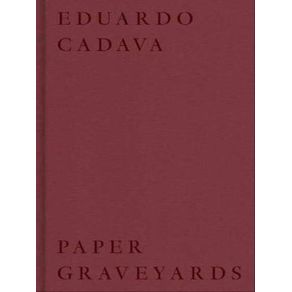A generously illustrated training manual for reading images, discussing work by Félix Nadar, Roland Barthes, Fazal Sheikh, Susan Meiselas, and others.
Paper Graveyards is neither a work of traditional art history nor one of literary criticism. It is not strictly a history of ideas either, notwithstanding its very obvious erudition. Rather, in drawing upon all of these methods and approaches--and with extraordinary attention to language and style--Cadava's writing examines the spectacular explosion of images during the last twenty years as a prompt to discuss not simply specific images but the role and place of these images in our everyday life.
Considering work by Félix Nadar, Roland Barthes, Leon Golub, Nancy Spero, Fazal Sheikh, Susan Meiselas, and others, Cadava delineates different modes of reading that, taking their point of departure from the conviction that the past, the present, and the future are always bound together, provide us with a training manual of sorts for understanding visual material in the twenty-first century. In the process, these generously illustrated essays actively expand our sense of literacy by reconstructing the networks of relations that inhabit the plural worlds of images, and create a critical genealogy of what we still call "an image," even when, with every day that passes, we perhaps understand less and less what this might mean.

